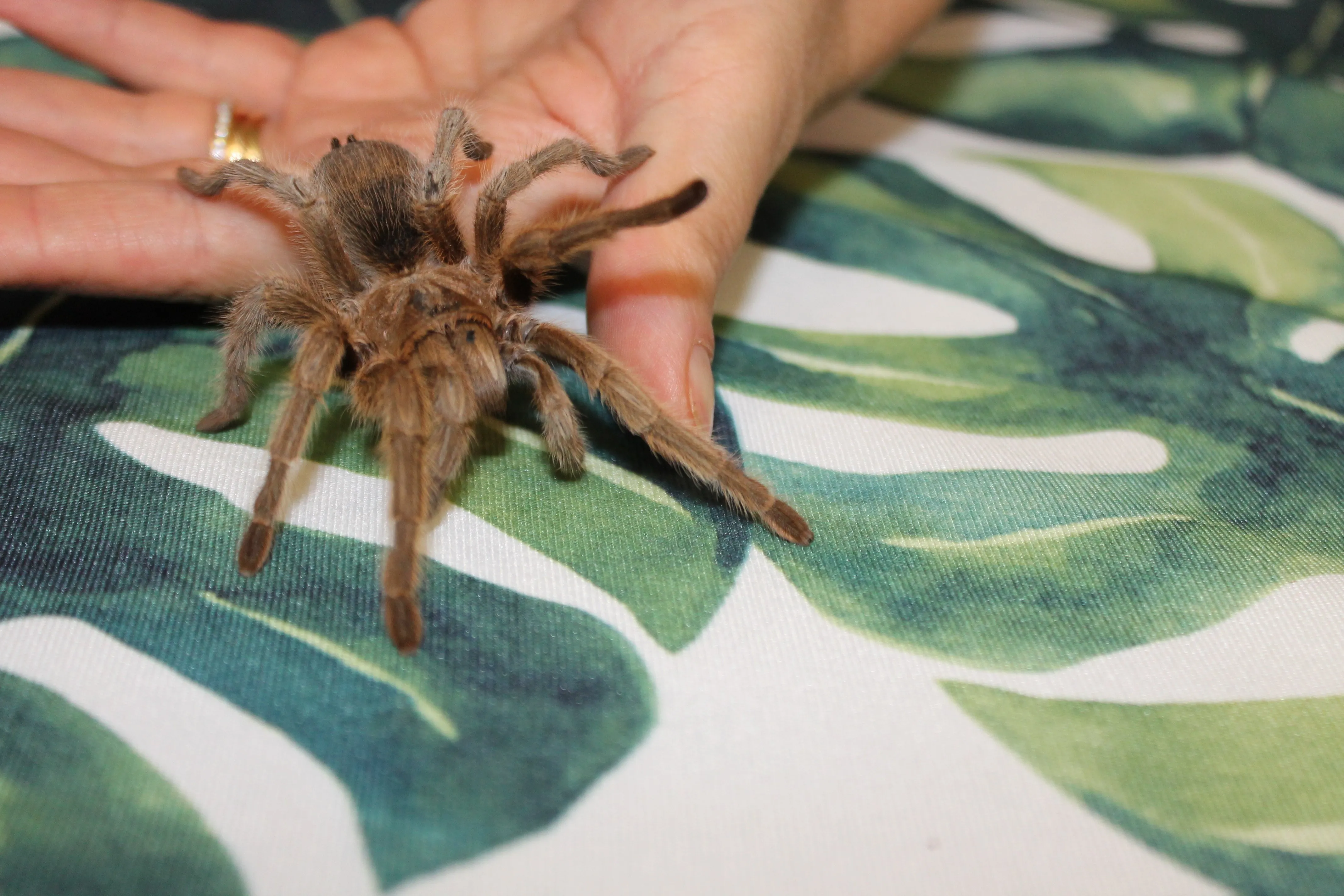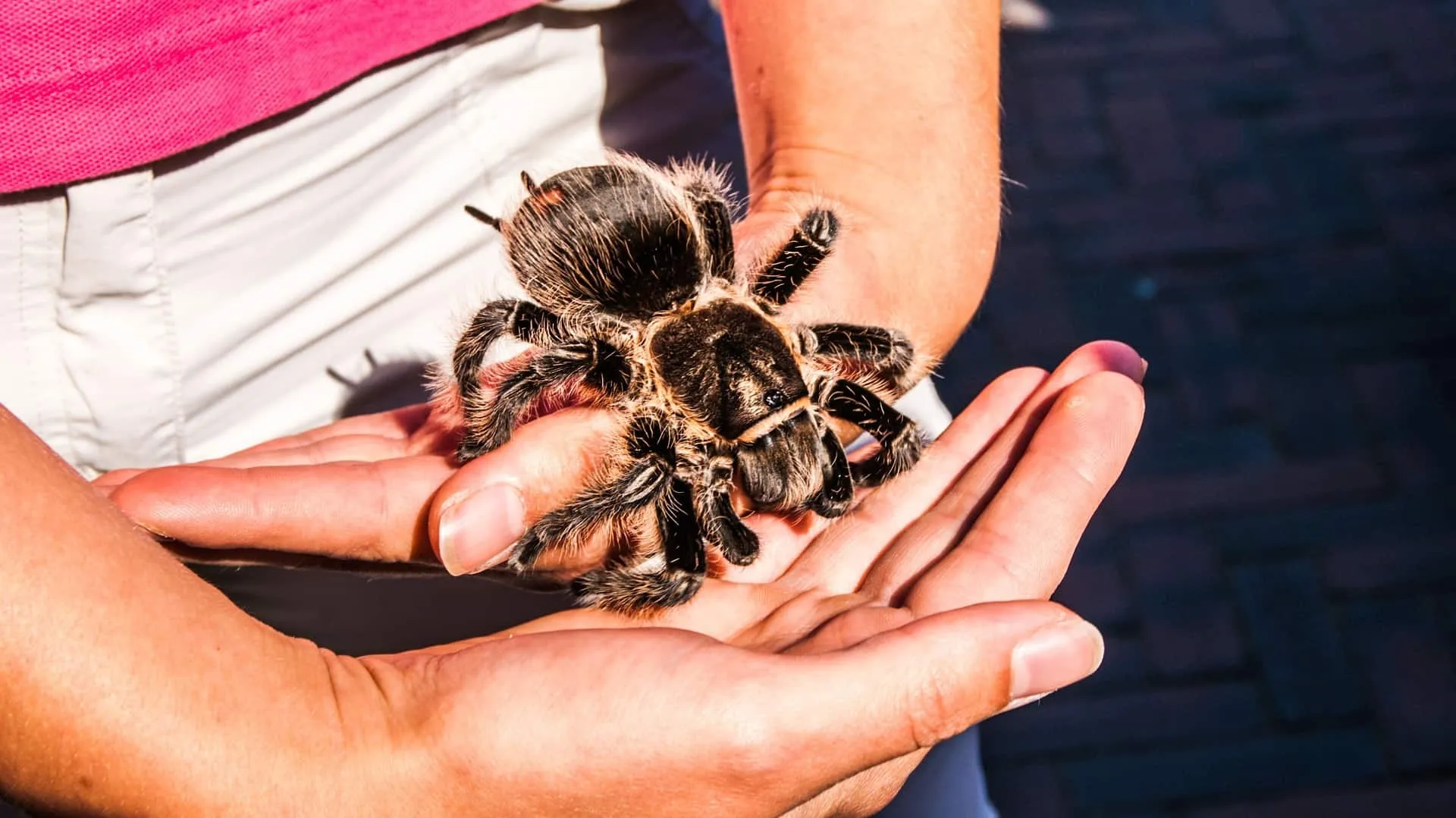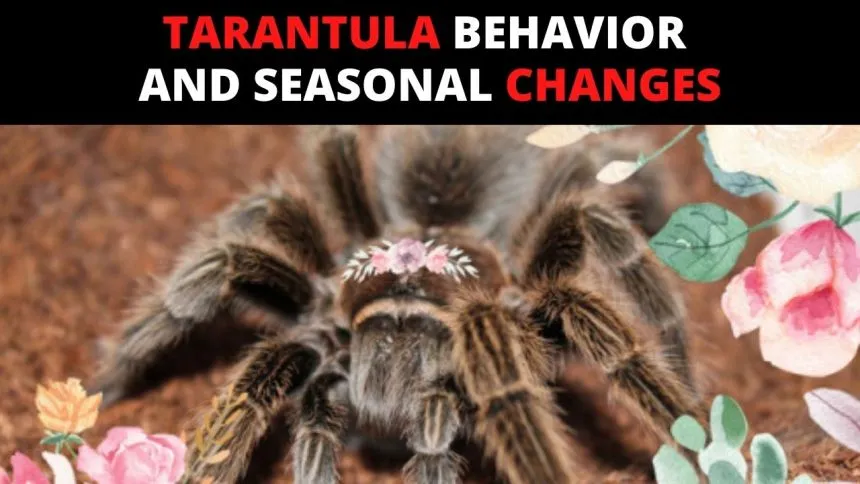Understanding Tarantula Behavior
Tarantulas, despite their fearsome reputation, are fascinating creatures with a complex array of behaviors. Understanding these behaviors is crucial for anyone considering keeping a tarantula as a pet or simply interested in learning more about these incredible arachnids. Their actions are primarily driven by instinct and survival, offering a unique glimpse into the world of these often-misunderstood animals. This guide will delve into the intricacies of tarantula behavior, covering everything from natural instincts to signs of stress, providing a comprehensive overview for both beginners and experienced enthusiasts. Grasping these behavioral patterns will lead to a greater appreciation for their needs, and more importantly, ensure a healthier and happier life for these captivating creatures. Proper care starts with proper understanding.
Natural Behaviors and Instincts
Tarantulas exhibit a range of natural behaviors honed over millions of years of evolution. These behaviors are largely instinctive and essential for their survival in the wild. Understanding these natural behaviors is the foundation of providing appropriate care in a captive environment. Many of these behaviors are directly tied to their predatory lifestyle and need for protection from predators. Observing these behaviors provides insight into the tarantula’s well-being and allows for adjustments in care if needed. They are masters of their domain, even in captivity. This section explores the core instincts and natural actions you are likely to see.
Burrowing and Hiding Behaviors

Many tarantula species are fossorial, meaning they are burrowers. They spend a significant amount of time underground, creating burrows for shelter and protection. Others are arboreal, preferring to live in trees or other elevated structures. Even the species that don’t burrow often seek out hiding places. This behavior is crucial for thermoregulation, protection from predators, and ambush hunting. When keeping a tarantula, providing suitable substrate and hiding places is vital for their psychological well-being and allows them to exhibit their natural behaviors. Substrate depth will depend on the type of tarantula you have, so research your particular species.
Hunting and Feeding
Tarantulas are ambush predators, meaning they wait for prey to come within striking distance. Their hunting strategy involves a lightning-fast strike and the injection of venom to subdue their prey. Their diet typically consists of insects, but larger species can consume small vertebrates. Feeding frequency depends on the tarantula’s size and age, with younger tarantulas needing more frequent meals. Observing feeding behavior can be a fascinating aspect of tarantula keeping, providing a glimpse into their predatory nature. Ensure that prey items are appropriately sized to prevent injury. Avoid feeding them prey that are too large or too small.
Defensive Behaviors
Tarantulas have several defensive mechanisms to protect themselves from threats. These behaviors are primarily employed when the tarantula feels threatened or perceives a danger. Understanding these defensive strategies is vital for safe handling and to avoid stressing your pet. They range from subtle warnings to more aggressive displays, providing valuable insight into the tarantula’s state of mind. Recognizing these behaviors can help you interact with your tarantula safely and minimize any potential stress. Be aware of the cues your tarantula gives you.
Flicking Hairs (Urticating Hairs)

Many New World tarantula species have urticating hairs on their abdomen. These hairs are flicked at potential threats as a defense mechanism, causing irritation upon contact. The tarantula uses its legs to rub the hairs off its abdomen, directing them towards the perceived danger. This defense can cause skin irritation, and in some cases, respiratory issues if inhaled. Avoid handling tarantulas that are known to have urticating hairs. Always wash your hands thoroughly after handling or cleaning a tarantula’s enclosure. Be mindful of the potential for these hairs in the air when working around their environment.
Biting
Tarantulas will bite as a last resort defense. While their venom is generally not lethal to humans, a bite can be painful and cause local reactions, such as swelling, redness, and itching. The severity of the reaction varies depending on the individual and the tarantula species. Avoid handling tarantulas unnecessarily and always use proper handling techniques to minimize the risk of being bitten. If bitten, clean the wound thoroughly and seek medical attention if symptoms worsen or if you have any concerns. Most bites occur when a tarantula feels threatened, so preventing this behavior will keep everyone safer.
Threat Displays
Before resorting to biting, tarantulas often display a range of threat behaviors. This can include raising their front legs, exposing their fangs, hissing, and adopting a defensive posture. These displays serve as warnings to potential predators to back off. Recognizing these threat displays is crucial for safe handling and to avoid provoking a bite. If a tarantula displays these behaviors, it’s best to leave it alone and allow it to calm down. Understanding these warnings will help keep you and your tarantula safe. Observe your tarantula’s body language closely.
Social Behaviors

Most tarantula species are solitary creatures. They generally do not exhibit social behaviors and are best kept individually. There are exceptions, with some species showing a degree of tolerance towards others, but these are rare. Keeping tarantulas together can lead to competition for resources, injury, or even cannibalism, particularly during molting, when they are vulnerable. The need to be alone is part of the tarantula’s natural behavior and keeping them in separate enclosures is essential for their well-being. If you are considering keeping more than one tarantula, research the specific species to determine whether it’s appropriate.
Mating Behavior
Mating behavior in tarantulas is a complex process. Male tarantulas often engage in a courtship ritual involving drumming on the substrate to attract a female. If the female is receptive, the male will approach and attempt to mate. After mating, the female may or may not eat the male, depending on the species. The female will then lay eggs and protect them until they hatch. Breeding tarantulas requires specialized knowledge and careful management. It’s important to understand the species’ mating behaviors before attempting to breed them. Proper setup, environment and timing are crucial for a successful mating process. There are also potential risks involved for the male tarantula.
Molting Behavior
Molting is the process by which tarantulas shed their exoskeleton to grow. This is a vulnerable time for tarantulas. During molting, they become soft and defenseless. Molting frequency depends on the tarantula’s age and growth rate, with younger tarantulas molting more often. Understanding the molting process is essential for proper care and to avoid disturbing the tarantula during this sensitive period. Be patient and don’t interfere during the molting process. After the molt, the tarantula will be a bit more vulnerable, so avoid handling until the new exoskeleton hardens.
Pre-Molting Signs

Several signs indicate that a tarantula is preparing to molt. These include a darkening of the abdomen, a loss of appetite, lethargy, and the tarantula may also create a web mat or flip onto its back. If you notice these signs, it’s crucial to avoid disturbing the tarantula and to ensure its enclosure is safe and secure. Increasing the humidity slightly can also be helpful. Creating a safe, undisturbed environment will allow them to molt without problems. It is important to keep any feeders out of the enclosure at this time, since the tarantula will be very vulnerable.
Post-Molting Care
After molting, the tarantula’s exoskeleton is soft and vulnerable. It will take a few days or weeks for the new exoskeleton to harden completely. During this time, avoid handling the tarantula and offer food sparingly. Provide fresh water and ensure the enclosure is clean. Once the exoskeleton has hardened, the tarantula will be ready to resume its normal activities. Allowing the tarantula to recover in peace will ensure a successful molting process. The colors will be much more vibrant after the molt.
Recognizing Signs of Stress or Illness
Recognizing signs of stress or illness is crucial for ensuring your tarantula’s well-being. Many factors can cause stress, including improper environmental conditions, inadequate diet, or rough handling. Early detection of stress or illness can help prevent serious health problems. Regularly observe your tarantula and become familiar with its normal behavior. Any significant changes in behavior should be investigated promptly. A healthy tarantula is an active tarantula, so if you notice a change in that, it is time to investigate.
Loss of Appetite

A loss of appetite can be a sign of stress, illness, or an impending molt. If your tarantula refuses to eat for an extended period, it’s essential to investigate the cause. Check the environmental conditions, such as temperature and humidity, and ensure they are within the appropriate range for the species. Examine the tarantula for any signs of illness or injury. Adjusting the environmental conditions, or providing the correct prey can sometimes solve this issue. If the problem persists, it’s wise to consult with a veterinarian experienced with exotic animals.
Lethargy and Unusual Positioning
Lethargy, or a lack of activity, can indicate a problem. If your tarantula is unusually still or unresponsive, it could be a sign of stress, illness, or an unfavorable environment. Similarly, unusual positioning, such as lying on its back for an extended period when not molting, can be a cause for concern. Check the environmental conditions and examine the tarantula for any visible signs of illness or injury. If the issue persists, consult with a veterinarian experienced with exotic animals. This will give you the best chance to diagnose and treat any potential health issues.
Understanding Tarantula Behavior for Pet Owners
Understanding tarantula behavior is crucial for responsible pet ownership. Providing the correct environment, diet, and handling techniques ensures the well-being of your pet. By understanding their needs, you can provide a fulfilling and enriching life for your tarantula. Researching your specific tarantula species will provide you with the knowledge to make the best decisions. Proper care includes providing the right habitat, monitoring environmental conditions, and understanding their feeding and handling requirements. Becoming an informed tarantula owner leads to a healthier, happier pet. This section provides important tips for new tarantula owners.
Providing the Right Habitat

Providing the right habitat is the foundation of tarantula care. The enclosure should be appropriately sized for the tarantula’s species and size, with adequate ventilation. The enclosure should also be secure and escape-proof. It’s important to consider the natural habitat of the species when setting up the enclosure. Mimicking its natural environment will make it more comfortable. The right environment includes proper temperature, humidity, substrate, and hiding places. Make sure that the enclosure meets the needs of your pet to allow them to exhibit their natural behaviors.
Temperature and Humidity
Maintaining the correct temperature and humidity levels is crucial for tarantula health. The ideal temperature range varies depending on the species, but most require temperatures between 70°F and 85°F (21°C and 29°C). Humidity levels also vary depending on the species. Use a thermometer and hygrometer to monitor these conditions. Use a heat source, such as a heat mat, to maintain the desired temperature. Misting the enclosure regularly or providing a water dish can help maintain humidity levels. Improper temperature and humidity levels can lead to various health problems, so it is important to monitor these levels regularly.
Substrate and Hiding Places
The substrate should be appropriate for the tarantula’s species and behavior. Many species thrive on a substrate mix that retains moisture, such as coconut fiber or peat moss. Provide hiding places, such as cork bark, artificial plants, or hollow logs, to allow the tarantula to feel secure and exhibit its natural burrowing behaviors. The substrate should be deep enough for burrowing species to create their burrows. Clean the enclosure regularly to remove any waste and uneaten food. A well-maintained substrate and hiding place will keep your tarantula happy and healthy. A safe environment will allow the tarantula to relax.
Feeding and Water
Feeding tarantulas is relatively straightforward. Offer appropriately sized insects, such as crickets, mealworms, or roaches, depending on the tarantula’s size and age. Remove any uneaten food within 24 hours to prevent mold growth and avoid stressing the tarantula. Provide a shallow water dish with fresh water at all times. The frequency of feeding varies depending on the species and age of the tarantula, but generally, young tarantulas should be fed more often than adults. Providing proper nutrition is essential for your tarantula’s growth and development. Remember that they can also go for extended periods of time without food.
Handling and Interaction
Handling tarantulas should be kept to a minimum. Tarantulas are generally not social animals and can become stressed by frequent handling. If handling is necessary, do so with extreme care. Always approach the tarantula slowly and avoid sudden movements. Gently coax the tarantula onto your hand, supporting its body. Never drop or squeeze the tarantula. Washing your hands before handling can also help to keep them safe. Be aware of the potential for bites or urticating hairs. Be respectful of their space. Remember that they can be easily injured. Frequent handling can cause stress to these amazing arachnids.
Common Mistakes to Avoid
There are several common mistakes to avoid when caring for tarantulas. Overfeeding is a common error, as it can lead to obesity and other health problems. Overhandling is another mistake, as it can stress the tarantula and increase the risk of injury. Providing improper environmental conditions, such as incorrect temperature or humidity, can also be detrimental to the tarantula’s health. Failing to research the specific species’ needs is another error, leading to inappropriate care. By avoiding these mistakes, you can ensure that your tarantula thrives in its captive environment. Avoid common mistakes to ensure you provide the best possible care for your tarantula.
